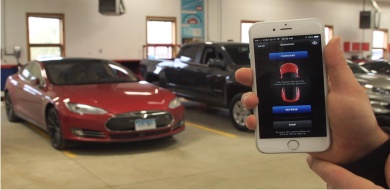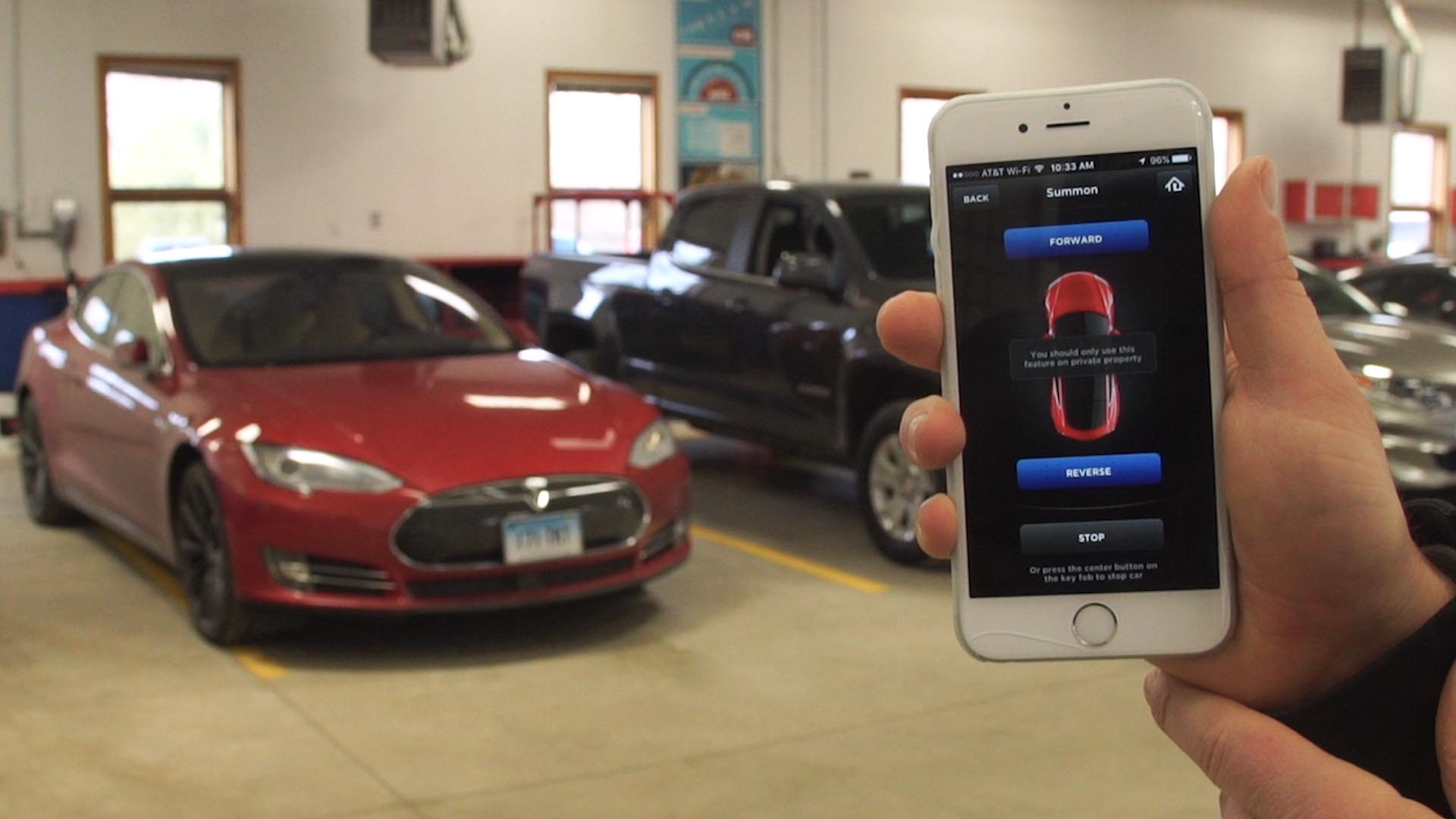Blog

Tesla to Fix Self-Parking Feature After Consumer Reports Raises Safety Concern
Summon mode now to come with additional protections
Earlier this year, American automaker Tesla rolled out its new Summon feature to the company’s high-end electric Model S sedan. Tesla said this feature offers “increased safety and convenience.” It allows the Model S to drive itself up to 33 feet at very slow speeds in order to enter or leave a narrow parking spot or crowded home garage—without anyone inside the car. The operator must be within 10 feet of the vehicle, according to Tesla.
Summon was included in the Tesla Version 7.1 software update, which was automatically sent out wirelessly to all Model S vehicles, including Consumer Reports’ P85D test car. We’ve tried the feature, and found it can be useful, but we also felt that Tesla’s implementation posed an avoidable safety concern of the car potentially having low-speed impact with objects or walls. We contacted Tesla about our findings and the company has agreed to update the system to make it safer.
Why Is Summon Mode Important?
Summon allows the Model S to be operated by remote control when the car is moving at very low speeds of around 1 mph, driving into your garage and closing the door, or opening the garage door and driving out. (This presumes your automatic garage door system can be operated using the HomeLink standard.)
Summon also can enable the Tesla Model S to pull in or out of a tight parking spot without a driver. That could save the driver from, say, accidentally dinging another vehicle when opening the door. This is particularly helpful considering the width of the Tesla Model S (2 inches wider than a Mercedes-Benz S-Class; 6 inches wider than a Honda Civic), which can make compact parking spaces even trickier to navigate.
Summon is relatively simple in concept, but it is an important harbinger of things to come. Self-parking functionality is one of a handful of emerging technologies that is paving the way to a future state of fully autonomous cars, and Tesla has made a point of pushing the envelope by allowing the car to, in limited circumstances, operate without a driver. At Consumer Reports, we consider it part of our mission to test emerging automotive technologies first hand as soon as they become available—and such autonomous features are a primary reason we bought our Tesla Model S P85D last year.
For instance, we were among the first to use Tesla's "AutoPilot"—a semi-autonomous system that enables the Model S to steer itself to stay in its lane. While we found it useful on the highway, we found that it struggled on secondary roads with unclear lane markings. We cautioned that in those situations, the system should not allow itself to be operated.
With a software update earlier this year, Tesla made changes to restrict its use on residential roads and roads without a center divider—a move in the right direction. When we tried the new Summon feature recently, the initial implementation gave us pause as well.

Posted on July 2016,20 // Author: Admin